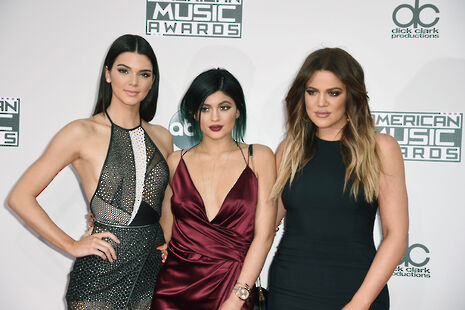Fashion and social media
Emily Fishman discusses the impact of modern technology on traditional fashion practices

Social media is all around us – Facebook, Twitter, Instagram, Snapchat… the list is endless. It provides a platform to help us connect with the world around us and makes up a firm part of the younger generation’s lives. But the effects that social media has had on the fashion industry have been quite profound. Social media is a new powerful marketing tool, which has the ability to shape our behaviour and our consumer habits. It also enables us to connect with the rest of the world, creating networks of a global scale.
In many ways social media has the ability to change the fashion industry – we are all ‘fast’ consumers, we desire the latest trend immediately. For example, at this week’s London Fashion Week show Burberry have just announced that instead of waiting weeks or months for people to be able to purchase their designs, because of the added pressure of social media, they have decided as a company to release their fashion to the masses as soon as the models set foot off the runway. This is quite unprecedented, and shows the speed at which we as consumers participate in social media and the entire process of consumption.
The ‘age of the selfie’ has not just enabled us to share fashion but has also created new types of fashion and popularity. Remember the dress last year – was it ‘blue and black’ or ‘white and gold’? After the mass popularity on social media, it became an explosion and a fashion statement on websites in hours. Clearly what social media enables is time and efficiency. Rather than waiting for the latest catwalk design or new clothing range from a high street store, as consumers we can simply turn to our smart phones and browse Instagram for the latest ideas and inspiration, or look to Facebook and observe what our friends were wearing at the latest party or club for ideas. Not only this, but social media has also enabled us to share our ideas and inspiration.
Yet at the same time social media has placed more pressure on the world of fashion. There is more embarrassment in being seen in the same outfit twice and more attention paid to what you are wearing. A similar experience happened to me this term, which fully exemplified the role of social media in our lives. Getting ready for half way hall, I was conscious of not wearing a dress I had already worn for a formal, pictures of which had been posted on Facebook and Instagram. To avoid the stigma of appearing as if I only had one choice of dress, I chose something different, but the entire thought process made it clear how important our choices are now within the world of social media.
Additionally, social media almost functions as a form of unofficial and free advertising, although companies can pay for advertisements on social media – the main marketing strategy ultimately comes through us. We as consumers are responsible for our own fashion choices and social media is able to publicise this. Social media puts life into fashion; the everyday becomes part of the fashion world; an Instagram photo drinking coffee with a Cambridge satchel, a Facebook selfie wearing a Topshop top, or a tweet regarding purchasing a new Ted Baker dress.
Social media sustains our growing demand and consumption, while at the same time altering the process of our consumer habits and speeding up how people view the world of fashion.
 News / Fitz students face ‘massive invasion of privacy’ over messy rooms23 April 2024
News / Fitz students face ‘massive invasion of privacy’ over messy rooms23 April 2024 News / Cambridge University disables comments following Passover post backlash 24 April 2024
News / Cambridge University disables comments following Passover post backlash 24 April 2024 Comment / Gown vs town? Local investment plans must remember Cambridge is not just a university24 April 2024
Comment / Gown vs town? Local investment plans must remember Cambridge is not just a university24 April 2024 News / Climate activists smash windows of Cambridge Energy Institute22 April 2024
News / Climate activists smash windows of Cambridge Energy Institute22 April 2024 News / Copycat don caught again19 April 2024
News / Copycat don caught again19 April 2024





